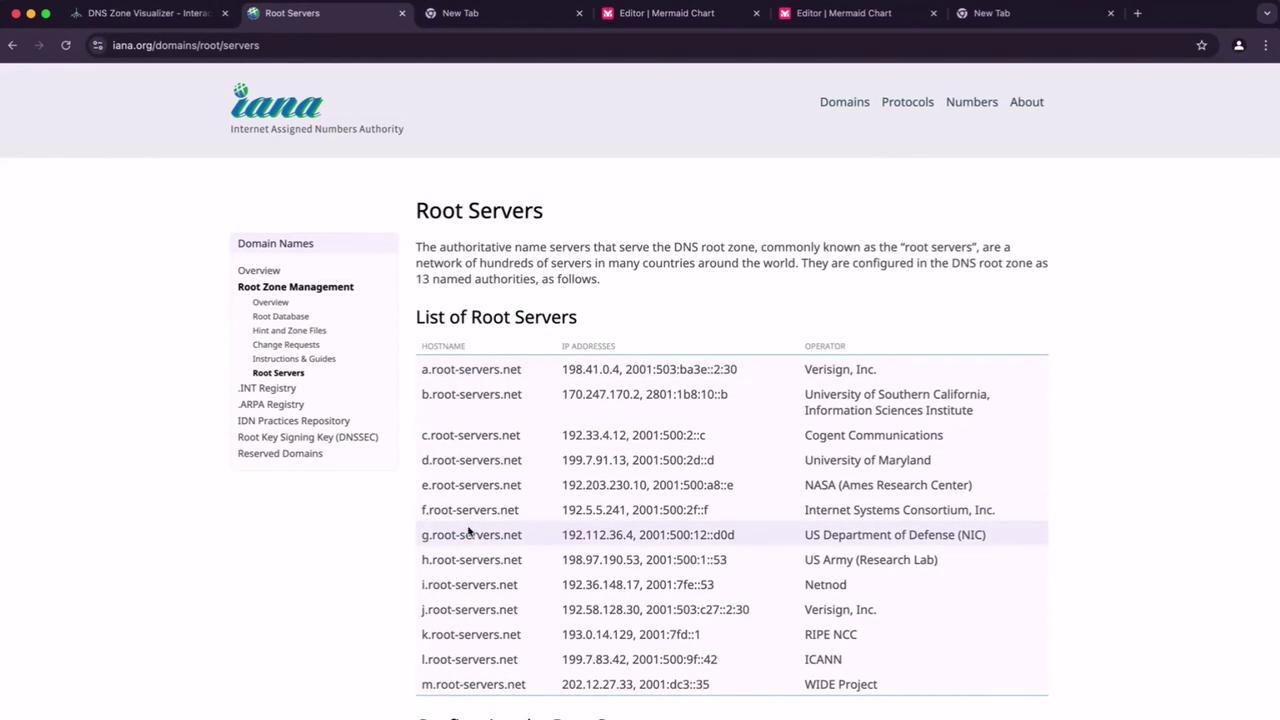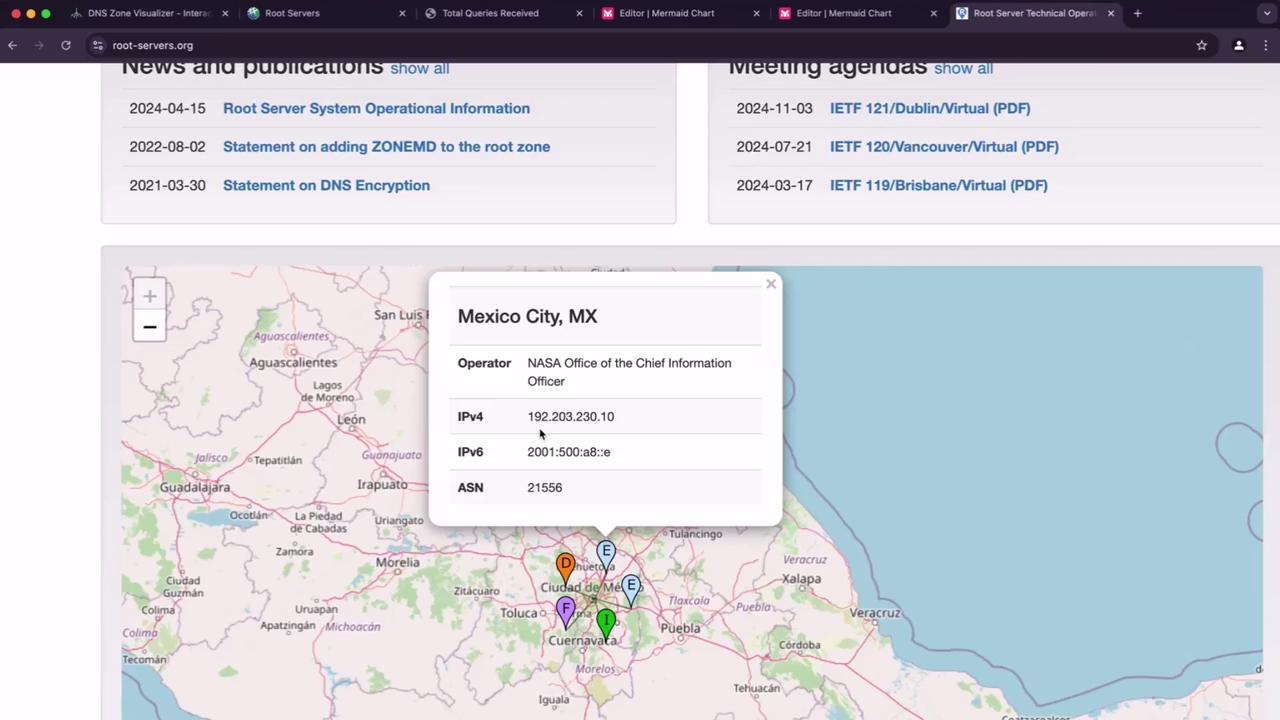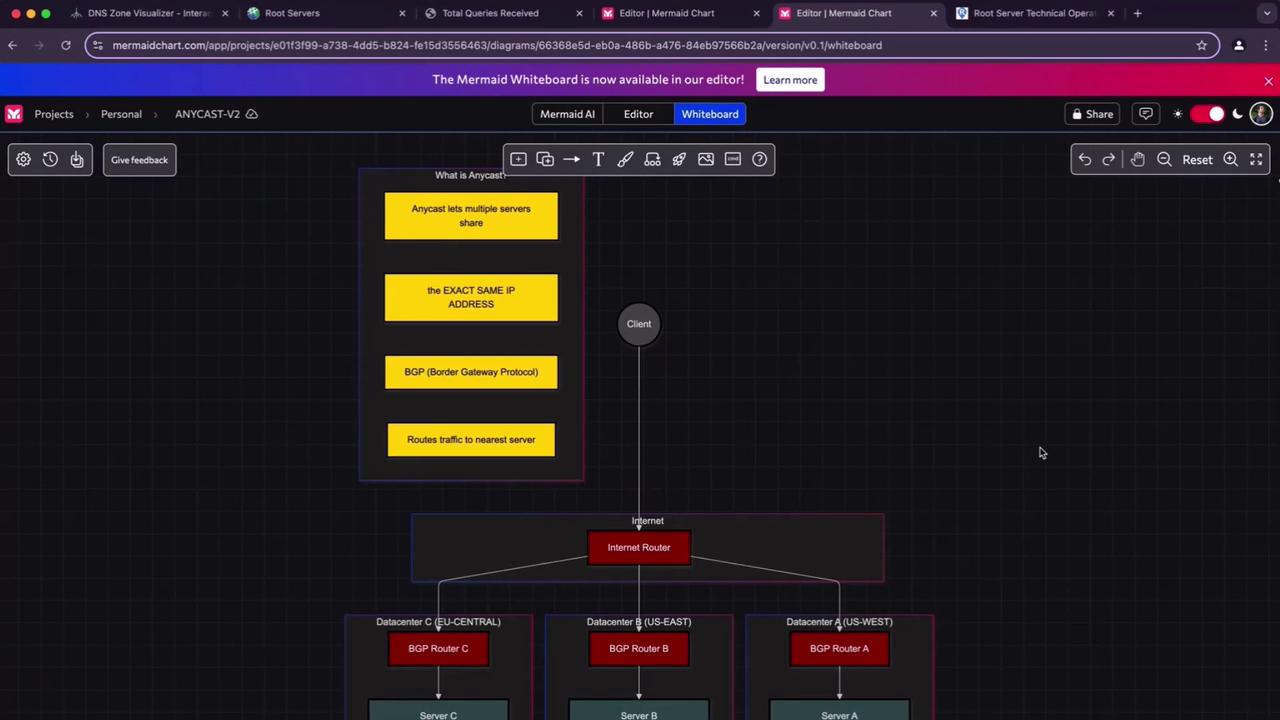Demystifying DNS
DNS as a System
Root Servers and Anycast
In this lesson, we revisit the domain resolution process, starting at the Root Zone, and explore how a seemingly small number of servers efficiently handle global DNS traffic. Using tools like "dig +trace" reveals that there are only 13 root name servers. While later discussions will detail why precisely 13 servers are used, this section focuses on how they manage billions of DNS queries from devices worldwide.

Imagine 13 servers processing millions of queries per second. This remarkable feat is made possible by a network design called Anycast.
Understanding Anycast
Anycast allows multiple physical servers to share the same IP address, effectively balancing the workload by routing users to their nearest available server.
To visualize this concept, visit the rootservers.org website. When zooming into a specific location, such as Mexico, you can see that several data centers host multiple root name servers. For instance, in Querétaro, servers E, C, K, D, and F are housed in a single data center, while in Mexico City, the servers are labeled as E, E, I, F, and D. Notice that the E server appears twice in Mexico City—a design choice that enhances local redundancy.
Clicking on the E server in Mexico City displays its IPv4 address (starting with 192 and ending with 230.10) along with its IPv6 address. Similarly, another server in Querétaro shows the identical IP addresses. This pattern, where multiple servers share identical addresses, is also observed with other servers like F.

Zooming out reveals multiple data centers around the globe, including several in the United States and clusters near Washington. Despite the geographical variations, the IP addresses listed in the A records remain consistent across servers.
Anycast operates as a distributed system where multiple machines share the same IP address to manage massive traffic loads. By deploying these servers strategically around the world, the network uses a protocol called BGP (Border Gateway Protocol) to dynamically route users to the closest server based on the fastest route available.

For those looking to deepen their understanding of BGP and its role in network routing, be sure to check additional resources on YouTube.
In summary, the efficient handling of global DNS queries by 13 root name servers is largely attributed to the implementation of Anycast technology. In the next lesson, we will explore GeoDNS—a method that routes traffic based on the user’s subnet location rather than physical proximity. While Anycast relies on network routing protocols to select the nearest server, GeoDNS makes more granular routing decisions, ensuring optimal connectivity for users.
Happy learning!
Watch Video
Watch video content